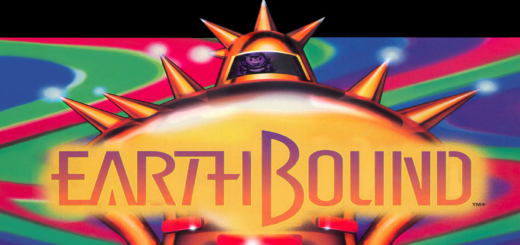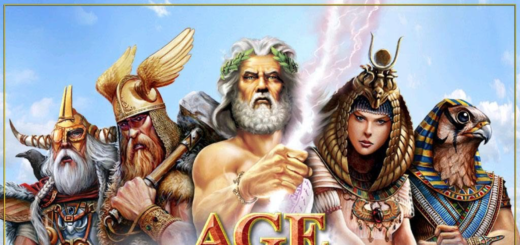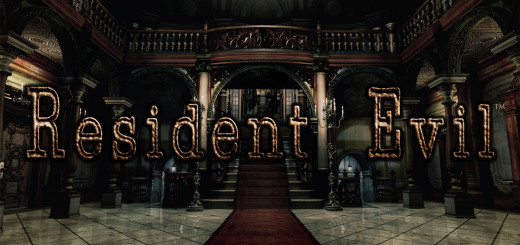Classic Callback: ACE COMBAT
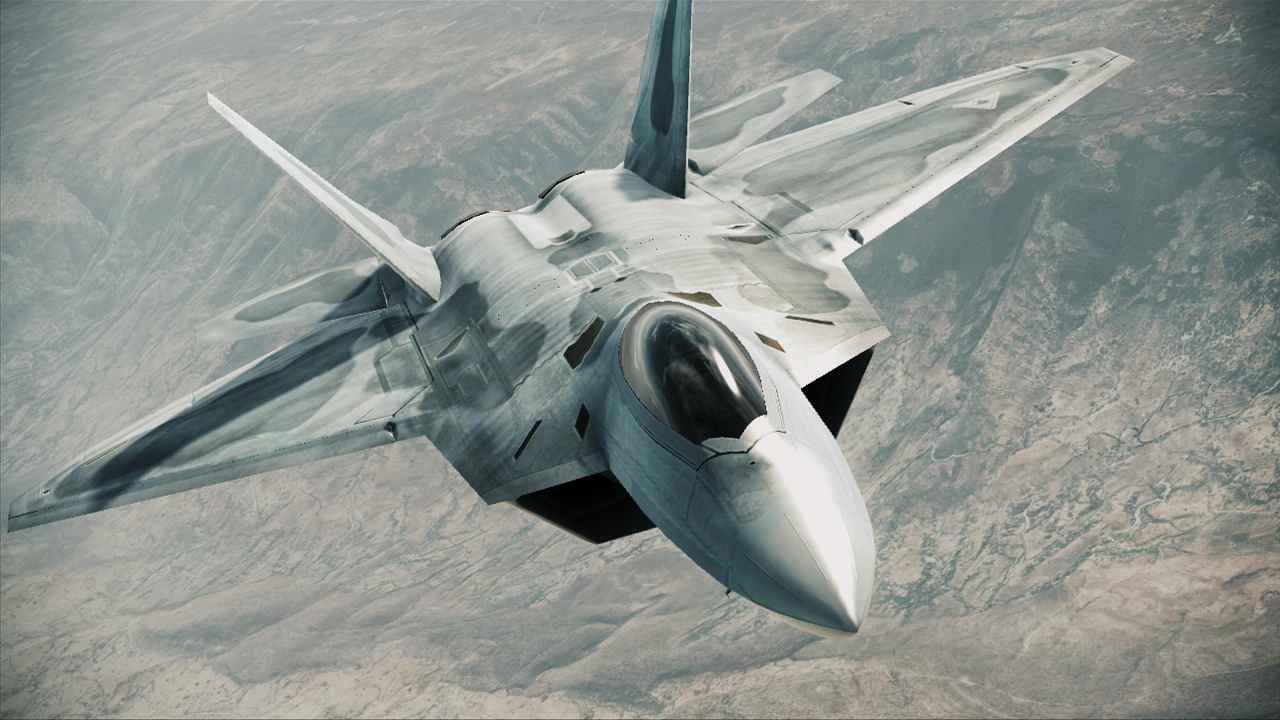
Bandai Namco Games is known today mostly for DARK SOULS and a few hundred PAC-MAN and DIG DUG mobile apps. But there was once a time that the Japanese publisher held another ace up its sleeve. Project Ace’s ACE COMBAT is one of those series that was rarely attempted before its inception and hasn’t seriously been challenged since. It was the only series to nail the arcade combat subgenre of flight sims, and it featured some of the best original game soundtracks this side of the HALO franchise.Though the series has devolved into a shell of its former self as of late, its earlier catalogue boasts the greatest dogfighting experiences in gaming, perfected in its trifecta of PlayStation 2 releases; ACE COMBAT 04: SHATTERED SKIES, ACE COMBAT 5: THE UNSUNG WAR, and ACE COMBAT ZERO: THE BELKAN WAR.
SHATTERED SKIES was not only my introduction to the franchise, but also the first game I owned on the PlayStation 2. Bandai Namco, in their infinite wisdom, released ACE COMBAT 3: ELECTROSPHERE in North America without a campaign mode (they thought Americans weren’t interested in story), so 04 could also be considered the series’ true introduction to the States as well. SHATTERED SKIES is considered by many (this writer included) to not only be the best ACE COMBAT game to date, but also one of the greatest games released on the PS2.
SHATTERED SKIES plays out essentially like a METAL GEAR SOLID game centered around jets instead of one-eyed men with box fetishes. Like the other main ACE COMBAT entries, it is set on an alternate Earth ravaged by meteor showers, dubbed Strangereal by the developers. Thanks to the threat of going the path of the dinosaurs, the nations of Strangereal banded together to build a menagerie of Death Star-league anti aircraft weapons and hyper-advanced aircraft to intercept asteroid fragments. Once the extraterrestrial threat was neutralized, however, the remaining governments found themselves with plenty of disputed territory and trillions of dollars worth of military hardware to contest it with. Enter one of the most over the top pretexts to blow shit up in gaming.
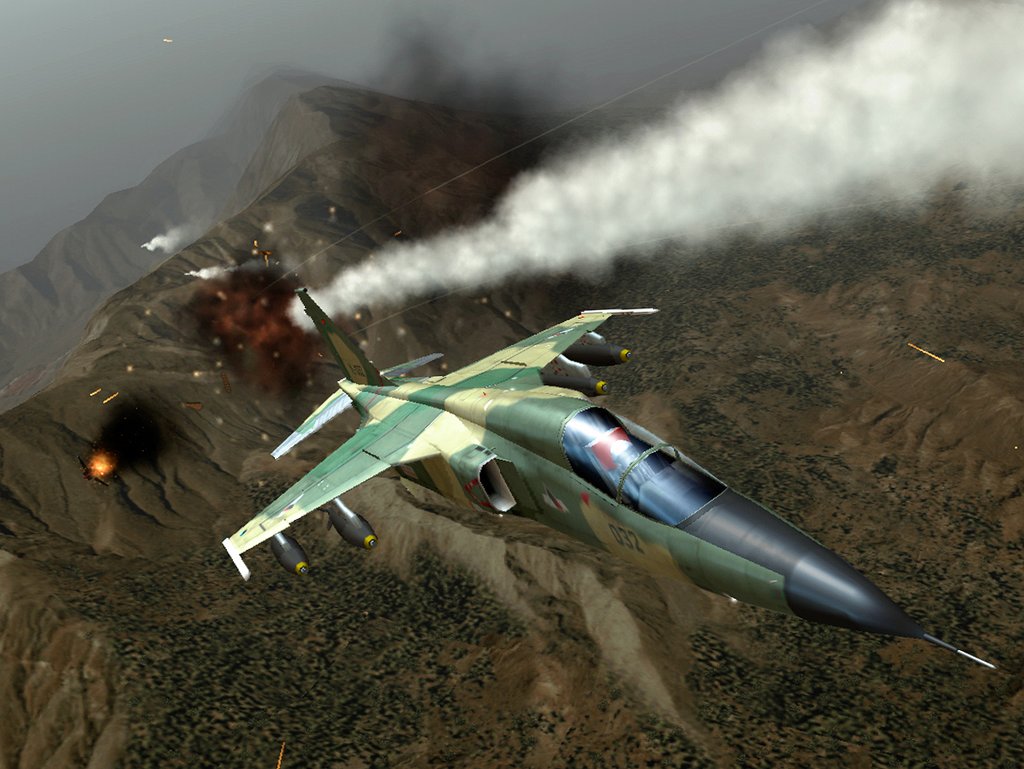
Blow shit up!
SHATTERED SKIES is often considered the best entry in series thanks not only to its excellently paced campaign and strictly arcade gameplay, but perhaps most unexpectedly its heartfelt and impactful narrative. During missions, you sit in the cockpit as Mobius 1, a rising star among the fighters of ISAF, a coalition united against the opportunistic advance of the Erusean Republic. The cutscene interludes between missions, however, follow the tribulations of a young boy who is orphaned during the fighting and struggling to survive in Erusean occupied territory. The boy, who narrates his experience years later as a grown man, comes to befriend Yellow 13, who is both Erusea’s top pilot and also unknowingly responsible for the deaths of the boy’s parents.
Though narrative context is established via a pre-mission briefing, there’s little more the player needs to know other than to blow up all designated objectives and rack up points by destroying as many secondary enemies within the time limit as possible. As an ISAF fighter streaking through the stratosphere during gameplay, everyone is reduced to a distant blip framed by target icons. Indeed, we never see Mobius 1’s face, nor hear their voice. Your character is known to others, and to the player, only by the legend spawned from their exploits, whether it’s in awe by their ISAF wingmen or dread from the Eruseans. The enemy, on the other hand, are the only people the game fully humanizes, as after the thrill subsides following each successful sortie, it’s through their eyes that we see the devastation that was just wrought. Yellow 13 grows more distant and despondent as his friends are killed by the player, and though the boy first cheers these victories against the invaders, he becomes more ambivalent as he comes to know the faces beneath the helmets.
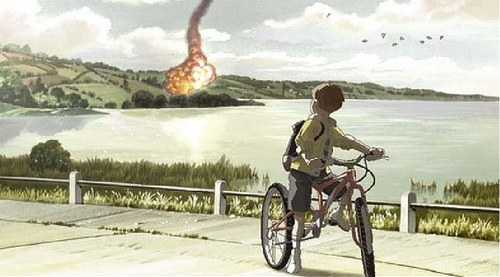
“Welp, not getting that deposit back”
While ensemble shows like GAME OF THRONES and BREAKING BAD have also tried giving us the perspectives of conflicting factions, it’s only through the duality of interactivity and plot in SHATTERED SKIES that the painful nature of such conflicts can be truly felt. ACE COMBAT 5, on the other hand, focuses its narrative lens solely on the good guys. THE UNSUNG WAR is the longest Ace Combat title with the most dense plot, which follows the members of Wardog Squadron, a rookie team of the Osean (American) Air Force, as they blast away wave after wave of Yuktobanian (Soviet), and later, Belkan (Nazi) forces. The story never feels like anything more than allegorical jingoism, and it’s not helped by the unbearably hammy and melodramatic dialogue praising the virtues of peace, which can apparently only be attained by bombing the enemy to kingdom come.
Though the oppressive narrative structure falls flat in delivering any meaningful message, it does allow the gameplay to reach its greatest levels of design. With more plot comes more scripting, both in cinematics and gameplay, so while many missions in SHATTERED SKIES mechanically amount to nothing other than “kill planes” or “bomb the tanks,” each mission in THE UNSUNG WAR feels truly unique. Scenarios see Wardog Squadron defending a football stadium from surprise attack while performing a ceremonial flyover, or escaping pursuing craft while flying unarmed training planes. Though THE UNSUNG WAR is an abysmal exercise in game writing, it is easily the best of the three games from a design standpoint.
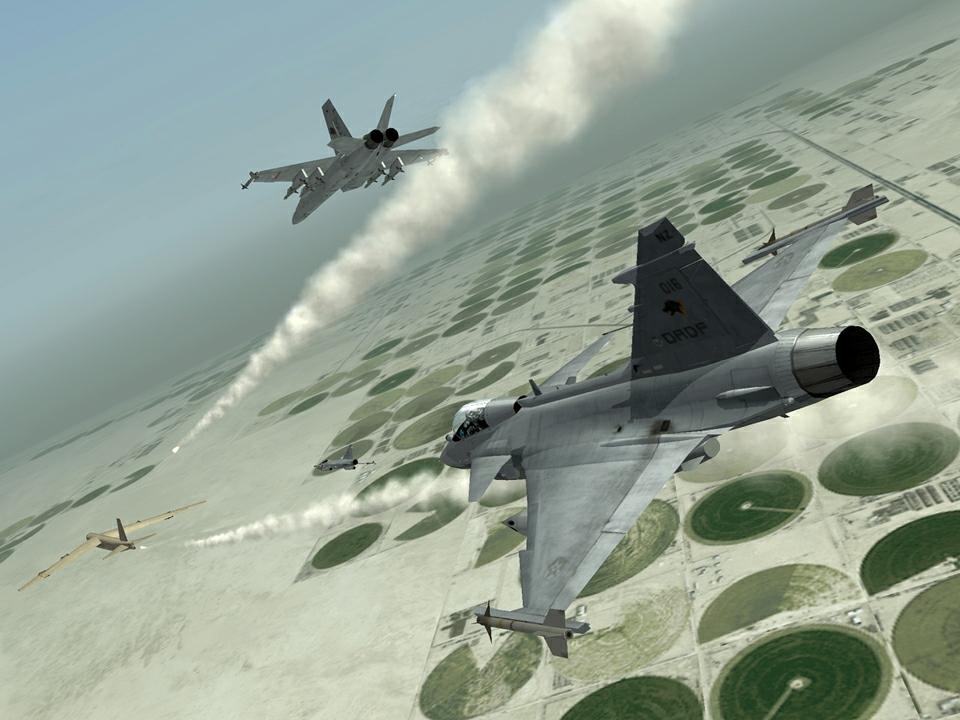
Although “Blow shit up!” is always an effective context
ACE COMBAT ZERO rounds out the heyday of the Ace Combat franchise, acting as the prequel to THE UNSUNG WAR. THE BELKAN WAR is the earliest game chronologically, set in the 1990’s, before the asteroid impacts. Perhaps as a response to the tripe that was THE UNSUNG WAR’s story, THE BELKAN WAR is the shortest of any Ace Combat title, clocking in at an average of three hours (!). Additionally, the narrative is presented as a foreign documentary investigating the war from a distance many years later, so we never really have a chance to care about what is happening.
THE BELKAN WAR knows what it’s doing, however, as it’s short campaign is the most replayable of any of the Ace Combats, and perhaps in gaming. Similar to STARFOX 64, the campaign follows branching pathways, all of which can’t be experienced until completing the game at least three times. Which operations you take part in is entirely up to you, meaning that depending on the composition of your hangar, you can choose to specialize in air-to-air dogfights, air-to-ground bombing runs, or a mix of both. The composition of the missions, however, is dependent on a pseudo-morality system that tracks how bloodthirsty you are. While every Ace Combat game converts points earned during missions into currency for purchasing and upgrading aircraft, THE BELKAN WAR includes “non-combatant” targets, ranging from surrendering or retreating foes to civilian structures, which can be destroyed for further rewards at the expense of honor. Greedy/bloodthirsty pilots will be able to afford higher tier aircraft to play around in, but will in turn be made a higher priority by the enemy and targeted by tougher foes, meaning that the morality in system is, in reality, a clever meta-difficulty setting that players can use to create additional challenge.
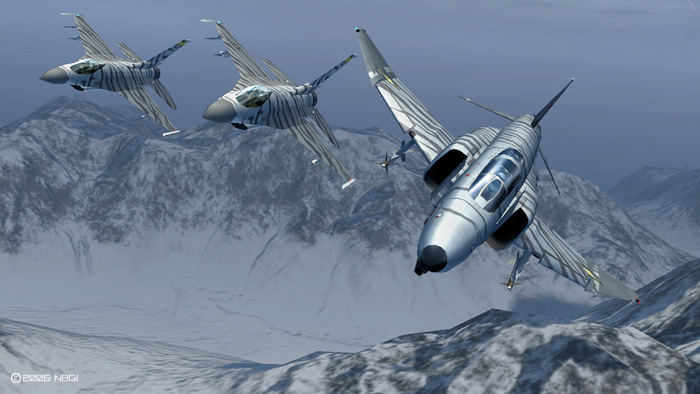
Hey, matching paintjobs don’t pay for themselves
By now, you may have noticed I’ve been focusing rather heavily on the greater schemes of each Ace Combat title, while neglecting the details that make these games fun to play. I went into the nitty gritty of what made rival flight sim ROGUE SQUADRON. handle so well, and rest assured, Ace Combat also suceeds in this regard, though in a completely opposite direction.
The common theme across each of these three games is that your plane, with minimal allied assistance, takes on vast hordes of enemy aircraft, ground defenses, and the occasional superweapon. Though you fly real world planes, mostly American and Russian fighters built from the 1980s onward, there is a highly suspended sense of reality in how they’re represented. Fighters carry anywhere from 40 to 80 missiles each, and they can perform ludicrous high-G maneuvers that would either shear apart their fuselage or kill the pilot in real life. Though still susceptible to one-shot deaths from enemy missiles at most difficulty levels, the player remains overpowered enough to clear most challenges with ease.
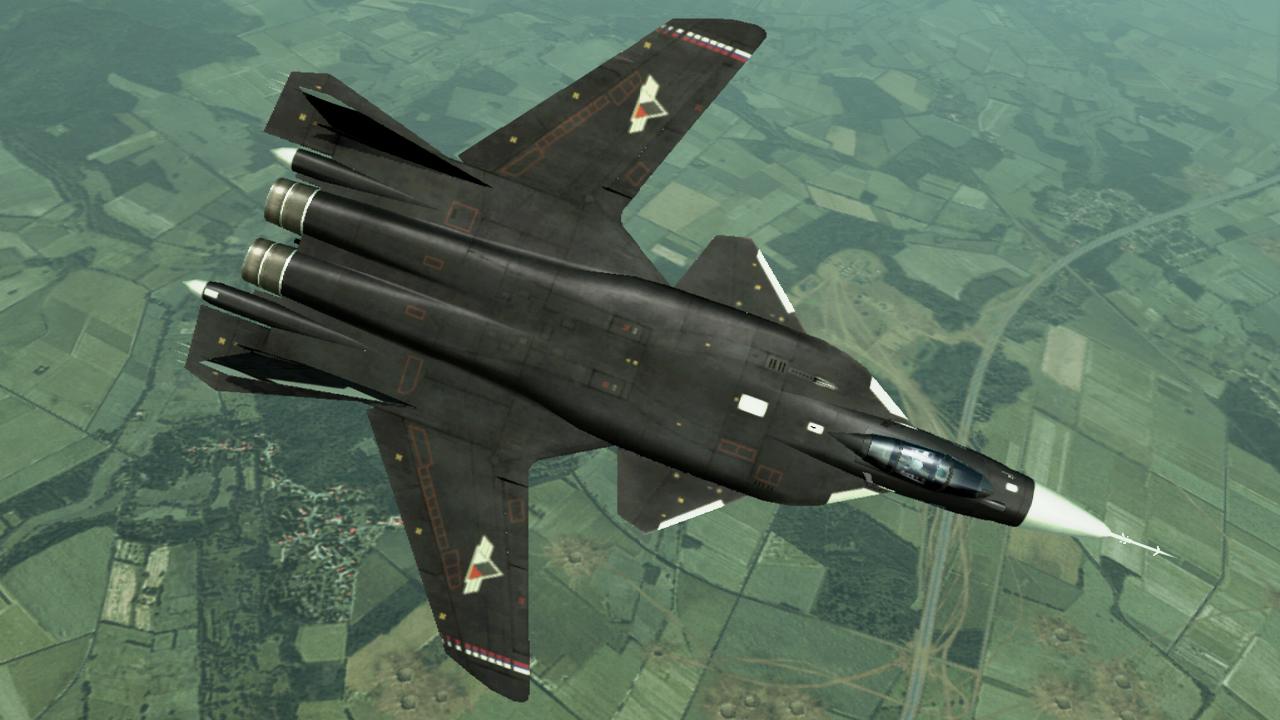
And look good doing it
I know what you’re probably thinking: “So what’s the fun then? What’s the point of playing an arcade title if I’m not being challenged?”. I pondered this question myself, wondering if my enjoyment of the series was only enabled by rose-tinted nostalgia goggles. But then I made several of my friends play the games to pick their brains, and I immediately remembered wherein Ace Combat’s challenge lied: the controls. While I, a longtime veteran of the series, was dispatching enemy fleets with ease, the newer players were struggling to even keep their planes in the air. While movement, and to a slightly lesser extent, driving controls, are practically identical across the thousands of games that feature them, there are very few high profile games that feature piloting aircraft, and their approaches to simulating them are incredibly diverse. Battlefield, Halo, and Rogue Squadron all feature aircraft that control completely differently, but the one thing they have in common is how easy they handle. The only AAA title that comes close to simulating Ace Combat’s feel is GRAND THEFT AUTO V, though the planes in that game are featured in the polar opposite context and quantity.
To turn the direction of your plane in Ace Combat, three steps are required. First, the plane must roll 90 degrees. Next, the plane must pull up to adjust pitch, effectively moving it in the right direction. Finally, the plane must roll back into a perpendicular axis to finalize the movement. It’s a mouthful to articulate, and even harder to master in practice, even with Ace Combat’s fairly loose interpretation of aerodynamics. Considering that all of this must be done in conjunction with keeping track of altitude and speed, watching out for structures and other landmarks, and avoiding enemy fire, all while attacking targets, suddenly knowing how to fly seems like the least of the player’s worries.
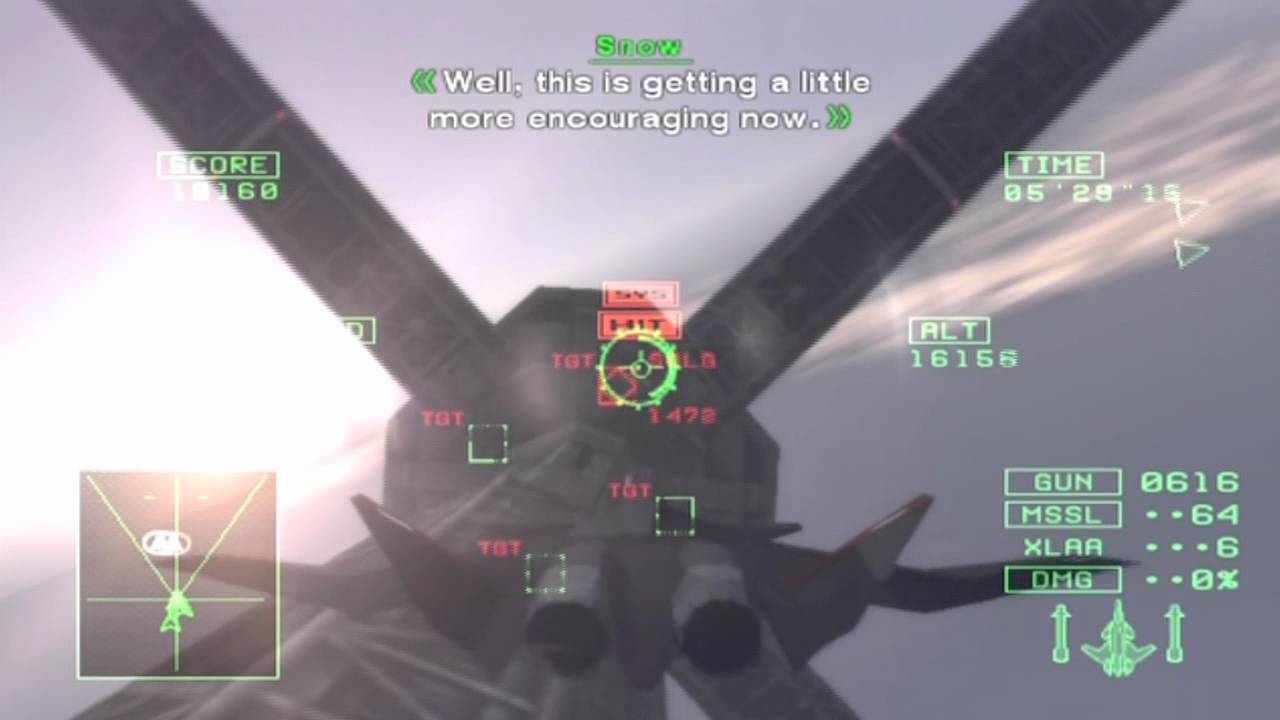
The “Hit” in this case refers to what your plane will probably be doing to the side of this satellite
Yet mastering the controls is what separates the novice from the ace, and once the player has ascended the learning curve, the fun truly begins. Taking advantage of their larger-than-life aircraft, players can perform the insane moves needed to vanquish entire armies single-handedly. Threading the needle between skyscrapers to nail a convoy on the streets below, diving into a volcano to snuff a VTOL during takeoff, or skimming just above the ground to pull off a strafing run and dodging the wreckage you leave behind are all possible within these games, and none of these feats are tied to what plane you’re seated within. Sundering the superweapons in late game stages often requires precise piloting, such as flying indoors within ventilation tunnels or dodging giant fan blades, and pulling off said stunts just FEELS. SO. GOOD. It’s a rare case of gameplay serving the narrative, rather than the other way around. Once you’ve reached the point where such piloting becomes second nature, you truly feel worthy of the legend that your fellow pilots build you up to. The fact that such an accomplishment in design was implemented in an arcade series, and not a narrative one, makes it that much more impressive.
It looks cool, too, and each mission is followed by an instant replay feature so that you can admire your performance and whisper “Oh, that’s so cool!” to yourself in the dark. Two of the three PS2 entries also sported a distinct aesthetic in both visuals and sound, adding additional flavor to the experience. SHATTERED SKIES had crazy guitar riffs that fit perfectly during the high octane dogfights, but very somber ensembles during the downer cutscenes (beautifully rendered as still image anime slideshows accompanied by narration). THE BELKAN WAR traded the electric guitar for a Spanish one, featuring an awesome flamenco themed score that accentuated the more duel focused nature of that title. The documentary cutscenes in that game, meanwhile, featured live actors on soundstages playing the interviewees, in the vein of BLACK, COMMAND & CONQUER 3, or METAL GEAR SOLID 4, complete with all of the ham you’d expect from titles like those.
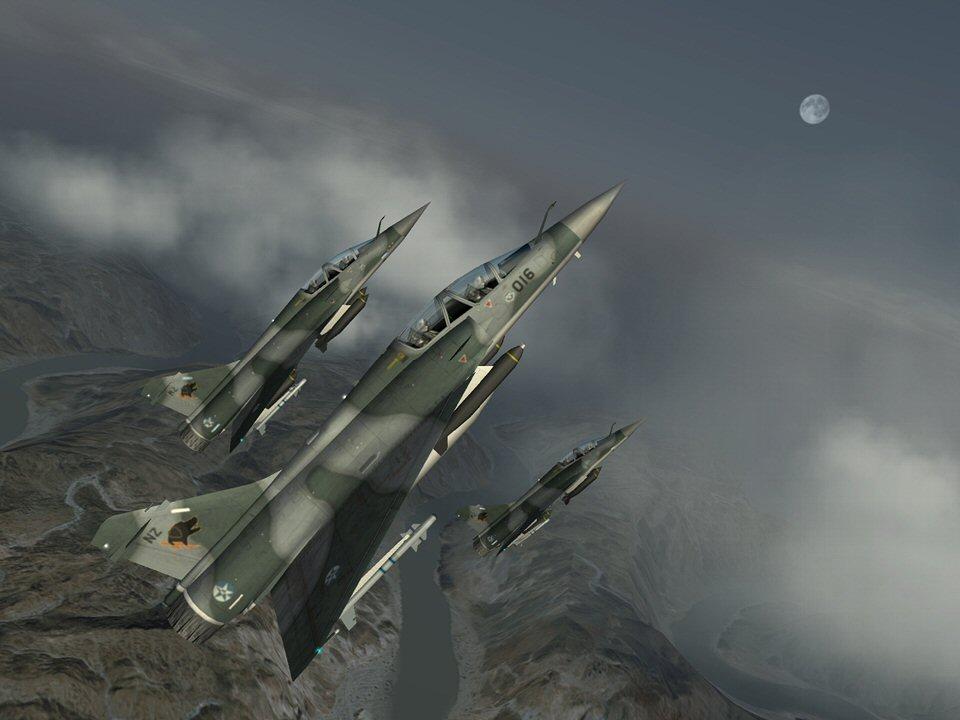
And it only got better, right?
Unfortunately, the series began a long nose dive following THE BELKAN WAR. ACE COMBAT 6 took advantage the Xbox 360’s hardware to simulate massive battles that were a blast to play. That being said, it had an obtrusive story that was so painfully melodramatic and uncompelling that it made THE UNSUNG WAR look like a masterpiece. ASSAULT HORIZON featured an equally boring story, though this time dry as a desert, but furthered the descent by placing half the game on rails, adding quicktime events and including gimmick missions like chopper gunning and an obligatory CALL OF DUTY 4 gunship level. Time will tell if the upcoming ACE COMBAT 7 will continue the plunge or herald a return to form, but for those who want to see what a real jet fighter fantasy looks like, nothing can beat the classics.
Each of these games are available on PlayStation 2, but all are reverse compatible on PlayStation 3.

